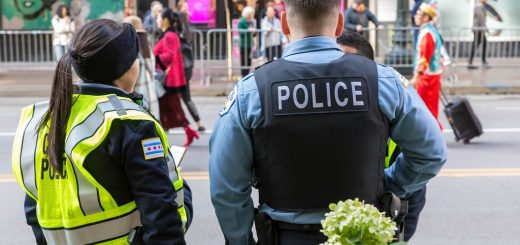Crown Immunity Trumps Police Officers’ Tarnished Reputations in Ontario (AG) v Clark

The Supreme Court of Canada (“SCC”) made important strides in determining the scope of immunity for Crown prosecutors when dealing with third party interests. In Ontario (Attorney General) v Clark, 2021 SCC 18 [Clark], the SCC faced the claims of three police officers who sought vindication after several Crown attorneys allowed unsubstantiated claims of police brutality and misconduct to enter the courtroom. These claims were tried before lower courts, ultimately damaging the officers’ reputations. The three officers pleaded Crown negligence and misfeasance, granting the SCC the chance to establish how Crown immunity operates in the face of complaints from police officers.
At issue in Clark is whether misfeasance claims by police officers can pierce a Crown prosecutor’s immunity regarding the decisions these prosecutors make in the exercise of their public duties (Clark, para 1).
Facts
In 2009, three officers with the Toronto Police Service, Jamie Clark, Donald Belanger and Steven Watts, arrested Randy Maharaj and Neil Singh (Clark, para 4). Prior to his trial, Maharaj brought an application to stay the proceedings and to exclude evidence obtained from his confession. Maharaj submitted that the Crown ought to exclude this evidence because the arresting officers beat him and gave him a “serious rib injury” during his arrest (Clark, para 5). Assistant Crown Attorney Sheila Cressman, who carried out the accused’s prosecutions, declared Maharaj’s confession inadmissible and stayed the charges against him.
The other accused, Singh, raised a similar argument upon his conviction, however the trial judge found that a reduced sentence would be a more appropriate remedy (Clark, para 8). In the trial judge’s decision, she described the police officers’ treatment towards the accused as “police brutality,” and the decision made headlines in the media (Clark, para 8). Singh appealed the decision not to stay the proceedings (Clark, para 10). In 2013, at the time of Singh’s appeal, the Toronto Police Service Professional Standards Unit (the “PSU”) had already issued their findings from an investigation into the officer’s misconduct, and found that such misconduct could not be substantiated on the evidence (Clark, para 10). The officers claim that the Crown prosecutor handling Singh’s appeal failed to inform the court of the PSU findings. The Court of Appeal allowed Singh’s appeal and ultimately entered a stay of proceedings (Clark, para 11). Like the trial judge, the Court of Appeal emphatically condemned the officer’s misconduct and the decision once again appeared in the media.
Following the appeal, the Special Investigations Unit found that Maharaj’s rib injury actually occurred after the arrest and that the allegations of police misconduct could not be substantiated (Clark, para 12). The Ontario Provincial Police reached similar conclusions in their investigation.
Trial History
By 2016, the police officers Clark, Belanger and Watts sued the Attorney General of Ontario (“Attorney General”) for negligence and misfeasance. Misfeasance is a tortious offence which requires the plaintiff to establish that the public official engaged in “deliberate and unlawful conduct in his or her capacity as a public official” and that the public official was “aware that the conduct was unlawful and likely to harm the plaintiff” (Clark, para 22). The lawsuit specifically targeted Assistant Crown Attorney Sheila Cressman, the Crown attorney on Singh’s appeal, Crown Attorney Amy Alyea and one other Crown prosecutor (Clark, para 13). The officers claimed to have suffered irreparable harm, including “damage to their reputations and credibility among members of the judiciary, the Attorney General’s office, the criminal defence bar and the public at large” (Clark, para 13). In the officers’ misfeasance pleading, they submitted that Cressman, the Crown prosecutor, failed to take “sufficient steps to investigate or rebut the claims of police brutality made against them” (Clark, para 24). They also submitted that Alyea failed to inform the ONCA of the results of the PSU report (Clark, para 24).
The Attorney General argued to strike these claims, citing prosecutorial immunity. The motion judge struck the negligence claim but found that it was not “plain and obvious” that prosecutors were immune to misfeasance claims brought by police officers (Clark, para 18).
On appeal, the Ontario Court of Appeal (“ONCA”) found that the trial judge was correct in striking the negligence claim based on Crown immunity principles, however they allowed the misfeasance claim to proceed, finding that Crown attorneys “are not immune from civil liability for misfeasance in public office” (Clark, para 20). The Attorney General appealed the ONCA decision to the SCC.
The SCC Majority Upholds Principles of Prosecutorial Immunity
In an 8-1 decision, the Supreme Court held that a police officer’s misfeasance claims cannot pierce a Crown prosecutor’s immunity. Granting police officers the right to sue the Crown for misfeasance would raise “profound risks” to the rights of the accused and to prosecutorial independence and objectivity in such a way that would compromise Canada’s criminal justice system (Clark, para 40). As such, the SCC would allow the appeal and grant the Attorney General’s motion to strike the officer’s misfeasance claim (Clark, para 62).
Justice Abella explained the importance of upholding Crown independence and prosecutorial discretion. This independence is crucial to prosecutors making objective and fair decisions: to expose them to civil liability could result in a “chilling effect” that ultimately impedes a prosecutor’s ability to act objectively (Clark, para 30).
Further, a “critical dimension” of a Crown prosecutor’s immunity is their independence from the police (Clark, para 41). If prosecutors suddenly became liable to police officers for misfeasance, their distinct and mutually independent relationship would turn from a cooperative relationship into an adversarial one (Clark, para 52). Prosecutors do not owe specific legal duties to the police regarding their execution of their public duties (Clark, para 47). As Justice Abella aptly summarizes, “cooperation is encouraged, but independence is mandatory” (Clark, para 45).
The SCC also held that opening a Crown prosecutor up to civil liability for reputational harm to police means considering “irrelevant considerations” and risking a prosecutor’s objectivity. The SCC used the example of Cressman in stating that she effectively exercised her judgement not to call any evidence on Singh’s stay application and to concede Maharaj’s assault allegations (Clark, para 54). To consider the police officers’ concerns of reputational harm would have “improperly incorporated policing objectives into her decision-making,” distracting her from fulfilling her prosecutorial duties (Clark, para 54).
Finally, the majority held that piercing prosecutorial immunity for misfeasance claims brought by police would damage the integrity of the administration of justice. Allowing police to sue Crown prosecutors would suggest to the public and to accused persons that police were “‘policing prosecutions’ through the use of private law” (Clark, para 56). Here, the public interest overrides an argument of restricting a prosecutor’s immunity.
Justice Côté Cautions Against Blanket Immunity for Prosecutors
Justice Côté would have denied the appeal and allowed the police officers’ misfeasance claim to proceed. In a lengthy dissent, Justice Côté largely took issue with the majority’s commitment to safeguarding prosecutorial immunity in near-absolute terms. Justice Côté would have preferred a balanced analysis that allows Courts to lift prosecutorial immunity under certain and specific circumstances. As she summarized:
Policy considerations such as the tactical nature of the decisions involved, the significance of the interests at stake, the lack of meaningful alternative remedies and accountability mechanisms, and public confidence in the office of prosecutor and in the police all weigh in favour of piercing the immunity, although in a limited way (Clark, para 65).
Impugned Police Officers are Akin to Accused Persons in Criminal Proceedings
Justice Côté disagreed with the majority when they reasoned that piercing prosecutorial immunity should remain limited to instances that would adversely affect accused persons (Clark, para 60). Rather the dissent opined that in certain situations, courts should lift immunity for non-accused third parties, like police officers. Justice Côté contended that police officers who face accusations of police brutality as third parties to a criminal proceeding are similarly situated to that of an accused person. “Although not formally charged,” Justice Côté qualified, “police officers are, in essence, convicted of serious criminal offences without having had their day in court” (Clark, para 65).
A “Chilling Effect” Does Not Apply on These Facts
Justice Côté also departed from the majority’s reasoning that displacing prosecutorial immunity in this situation would result in a “chilling effect” that would hinder the independence and objectivity of Crown attorneys. She stated that although a chilling-effect is an important factor for courts to consider, such a term must not be invoked “like a mantra” to justify the near-absolute application of prosecutorial immunity (Clark, para 120). Rather, the possibility of a chilling-effect should apply to a specific liability threshold within the tort at issue. Tort offences with a high liability threshold lessens the risk of creating a chilling-effect on prosecutorial discretion because a high threshold inherently limits the number of cases that make it to court (Clark, para 120).
The Officers Deserve Their Day in Court
Ultimately, Justice Côté highlighted several reasons why officers Clark, Belanger and Watts deserved to have their misfeasance claim heard in court. First, they had significant interests at stake in terms of potential “disciplinary, civil and criminal liability,” their right to dignity and a good reputation and for the preservation of their mental health (Clark, para 133).
Second, Justice Côté explained an inherent injustice plaguing Clark, Belanger and Watts: these officers’ day in court is contingent on the accused person’s bringing a civil suit against the police (Clark, para 146). In other words, if Singh or Maharaj choose not to sue these officers, the officers are unable to challenge the findings of police brutality (Clark, para 146). With tongue-in-cheek, Justice Côté stated that the officers’ sole recourse is to “cross their fingers and hope” that the accused person brings an action against them so they can properly vindicate their reputations (Clark, para 146). Conversely, if the officers could pierce Crown immunity, they need not wait for an unpromised opportunity.
Throughout her dissent, Justice Côté fervently advocates for a limit on prosecutorial discretion regarding third parties like police officers. Without this necessary limit, prosecutors are empowered to “trample on the careers, dignity, reputations and mental health” of third parties, seemingly without consequence.
Policy Implications
The Right to a Good Reputation?
Although not focal to the case, the decision in Clark raises an interesting debate on the legitimacy of the “right to a good reputation”. Does such a right exist? And if so, in what context can courts, prosecutors and accused persons evoke this right?
Justice Côté highlighted this alleged right in her dissenting opinion, going as far as to read it into the Charter of Rights and Freedoms. She stated that:
Although the right to a good reputation is not specifically mentioned in the Charter, it is reflected in ‘the innate dignity of the individual, a concept which underlies all the Charter rights” (Clark, para 137).
Justice Côté placed significant weight on the importance of maintaining a reputable image in the public eye—a place where “reputations are made and destroyed” (Clark, para 143)— to the extent where it became a primary consideration in her argument for displacing prosecutorial immunity for police officers.
In contrast, the SCC majority seemingly placed little weight on this novel “right”. Justice Abella even dared to label “reputational harm to police officers” as an “irrelevant consideration” that impedes a Crown prosecutor’s ability to fulfil her duties (Clark, para 53). While the future of the right to a good reputation remains uncertain in other legal contexts, the SCC makes clear that it has no home in the face of prosecutorial immunity for the foreseeable future.
Where There is a Right, There is a Remedy
Ubi jus, ibi remedium, a legal maxim, means “where there is a right, there is a remedy”. Justice Côté relied on this maxim in her resounding assertion that the justice system let down officers Clark, Belanger and Watts by obstructing their misfeasance claim from proceeding (Clark, para 133). Within this statement, the SCC’s sole dissent raises an important question: if these officers cannot seek meaningful vindication in the court of law, where else can they go? Justice Côté is of the mind that only the findings of a civil court may meaningfully restore the officers’ sullied reputations, and only damages can truly compensate for the harms they have suffered (Clark, para 141). While the Attorney General of Ontario raised other alternatives, such as administrative sanctions against the impugned Crown prosecutors, one may question if this solution can provide the same finality and atonement to individuals whose reputations, mental health and professional futures were tarnished in the public eye.
The SCC’s majority decision notably lacks meaningful alternatives for the three police officers. Justice Abella stated that:
The police certainly have a legitimate expectation and interest in their reputations not being unfairly impaired. But the solution cannot be to make prosecutors accountable to them in a way that obliterates independence between the police and prosecutors […] (Clark, para 59).
The majority’s silence on alternative methods of recompense is deafening, especially when read in conversation with Justice Côté’s impassioned assertions that this case “cries out for a remedy” (Clark, paras 64, 122). The dissonance between the majority and dissent on this point is particularly compelling and may impair the public’s faith in Canada’s justice system.
A Final Note on Ontario (AG) v Clark
While Crown prosecutors and judges should certainly exercise restraint in their use of consequential language such as “police brutality” and “torture” without proper findings of evidence, these public agents should remain alive to the fact that police misconduct—especially towards racialized individuals—is a very real and pressing issue in Canada. As such, marginalized victims should continue to be believed in instances of conflicting evidence.







Join the conversation